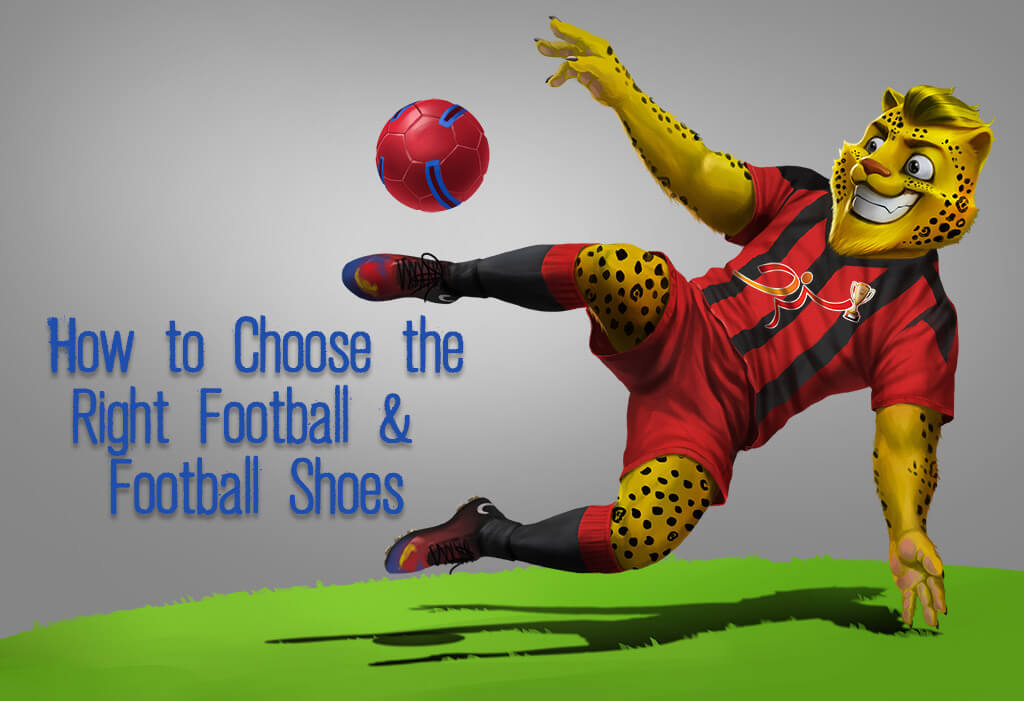
How to Choose the Right Football Ball and Football Shoes
Choosing the right football ball os a difficult task as they are available in a variety of variations and selecting right football shoes or cleats include the type of field you play on and the position you play.
Introduction: Football
Football is a team sport that involves kicking a ball with the foot with the aim of scoring a goal in the opponent’s post. It is officially the world's most popular sport with millions of players and fans worldwide. In this article, we will be looking at two essential equipment, football ball, and football shoes, that are required to play a game of football.
Choosing a Football Ball
The primary component of any football game is the ball, it even says so in its name. It is impossible to play a game of football without a ball and your choice of ball should correspond with the type of game you play. Choosing the right football ball can be an overwhelming chore as they are available in a variety of variations, from size and weight to materials and attributes.To help you get started, we have broken down all you need to know about choosing the right football ball for your style and location of play. SportsUncle offers a range of football balls to suit any game type.
- Choosing based on intended use
You should always choose a football ball based on the type of play for which it will be used most often. Football balls will generally perform best in games they are specifically designed for. Are you buying a football ball for regular training, official matches or occasional fun game? This chart will help you choose between the different types of football balls.
| Game Type | Ball type | Game Description |
| Official matches | · Professional match balls. · 11-A-side balls. | The most sought-after football balls, they the same balls used in international matches. |
| Training/Practice | · Practice/Camp Balls. · Promotional Balls. | Durable and resilient with stitched panels which help the ball maintain its round shape and resistance. Great for working on your craft and getting prepared |
| Indoor games | · Indoor balls · Mini balls · Skill balls | Designed to produce a controlled bounce with 5-a-side matches and indoor training in mind. |
| Futsal games | · Futsal balls | Smaller, lighter, and harder than an outdoor ball with a low-bounce, great for hard court surfaces. |
| Artificial grass | · Turf balls | Made to withstand more wear and tear from the rougher playing surface of artificial fields. |
- Choosing the best material
Football balls are made up of a bladder, the inside compartment that holds the air, and a casing, the outer cover that holds the panels and stitching. Both can be made of several different materials.
| Ball Part | Material | Characteristics |
| Bladder | Made of latex or butyl | · Latex bladders are preferred by most professional players because they are softer. · Butyl bladders are much harder with a higher air retention capacity. This means that they need be to be reflated less often than latex bladder balls. · It is good practice to inflate your football ball when it falls below the range of 9-10.5 pounds of air. |
| Casings | Made of synthetic leather, or polyvinyl carbonate (PVC), or polyurethane (PU), or a combination of both | · Synthetic leather balls deliver increased control and are designed for the highest level of play and professional matches. · PVC casings are usually cheaper, harder on the outside and very durable. · PU balls are softer to the touch, making them more responsive and typically higher in quality than PVC balls. · Glossy finishes are often added to football balls to help reduce scuffing as well as water damage. |
- Choosing the right size
Most manufacturers produce football balls in five different sizes. The size best suited for you may depend on your age and the type of game you intend to play. It is best to check the regulation book for size restrictions before purchasing one.
- Size 1 Football Balls – Used for fun games or to improve footwork fun.
- Size 2 Football Balls – Used for ball control drills and in matches for children between the ages of 3-6.
- Size 3 Football Balls – The smallest official ball, used in matches for children between the ages of 6-9.
- Size 4 Football Balls – Used in matches for children between the ages of 9-14.
- Size 5 Football Balls – The largest official ball and standard size for all players above the age of 14.
- Match ball vs. Training ball
Football match balls and training balls are the most common soccer balls you will come across. Match balls, especially professional match balls are designed with the game-play in mind and must follow official weight, size, and shape regulations. Training balls are used on a variety of playing environments during practice and recreation. They are designed to be more durable so they can be used for an extended period of time.
Choosing a Football Shoes
Factors that can influence your choice of football shoes or cleats include the type of field you play on and the position you play. To help you get started, we have broken down all you need to know about choosing the right football shoes for your style and location of play. SportsUncle offers a range of football shoes to suit any game type.- Where you play
The type of field you play on is the number one factor to consider when choosing a football shoe.
Firm Ground (FG)
Designed to be played on firm natural surfaces like most grass pitches. It features the most popular stud configuration with mainly plastic studs. Firm ground football shoes are not to be worn on artificial grass as it can tear it up.
Soft Ground (SG)
These football shoes consist of 6-8 metal studs that are longer for deeper penetration in the ground. This configuration is used by most professionals because they work great on soft and muddy fields. These shoes are not to be worn on hard or firm pitches to avoid injury.
Artificial Grass (AG)
Made with multiple hollow studs for an evener grip and shorter to put less strain on the joints and knees when playing on artificial grass.
Turf (TF)
Made with lots of little studs and a rubber abrasion resistant outsole to help maintain an even grip of dirt, gravel and turf fields.
Indoor Courts (IC)
These shoes feature a plain unmarked rubber outsole to maintain a consistent grip on indoor floors making them great for futsal or indoor football.
- Choosing boot by categories
You can choose football shoes based on your category of play.
- Speed – For players looking for more speed two factors, weight and traction, are key.
- Power – For power, you can go for a solid shoe that allows the foot to bend in a natural manner.
- Comfort – Go for shoes with a soft open leather upper for increased comfort.
- Control – For more ball control, you will need shoes with control elements for friction, grip and a good connection with the ball.
- Choosing the right material
Most players have differing opinions on what the perfect material for football shoes should be. So, it all boils down to personal choice and preference. We have listed the most popular materials used in making football shoes.
Leather
Most often hailed as the most comfortable shoe material and this has led to the creation of several different types of leather football shoes, including:
- Kangaroo leather (K-leather) – The premium, most sought-after leather shoes that molds to your feet and provide lasting durability.
- Natural leather – This includes calf and goatskin uppers that offer a truly unique feel on the ball.
- Synthetic leather – more companies seem to be employing a range of synthetic leather uppers that mimic the qualities of natural leather. This allows them to add other traits, such as waterproofing.
Synthetic
This material offers a completely different on the ball experience for players. Synthetic boots are lighter, thinner and more durable than leather ones. Most synthetic uppers emulate the comfortable softness of leather while reducing any water intake.
Knit
Made from a weave of the synthetic thread, knitted uppers are considered to be the boots of the future. They offer a sock-like fit with no distractions giving players a new type of feel on the ball. The knitted upper may also be lined with a protective layer for water resistance and to ensure durability.
Conclusion
That is all you need to know when choosing the right football ball and football shoes. You don’t have to be overwhelmed by the variety of options out there, just follow the guide above and you should be fine. You can also visit SportsUncle’s online store for football balls and football shoes you can count on.
Your email address cannot be published. Required fields are marked*

 My Account
My Account Track Order
Track Order Sports Guide
Sports Guide

No comments